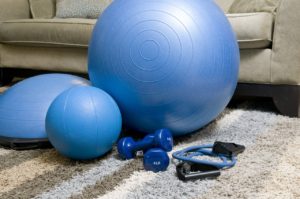SAD, or Seasonal Affective Disorder, is a type of depression that some people experience during the winter months when there is less natural sunlight. Symptoms vary from person to person but may include:
- Feelings of

- Sadness
- Anxiousness
- Emptiness
- Hopelessness
- Pessimism
- Guilt
- Worthlessness
- Helplessness
- Irritability
- Restlessness
- Fatigue and decreased energy
- Difficulty concentrating, remembering details and making decisions
- Difficulty sleeping OR oversleeping
- Changes in appetite or weight (e.g. craving carbohydrates and overeating)
- Social withdrawal (aka “hibernation”)
- Loss of libido and decreased interest in physical contact
- Loss of pleasure or interest in activities you normally enjoy
SAD affects about 6% of Americans; however, as many as 15% of people in the U.S. may have a milder version that includes only some of the symptoms, often referred to as the winter blues. People who live far from the equator are more likely to be affected. For example, only 1% of those who live in Florida experience SAD, compared to 9% of those who live in New England or Alaska. Age and gender also affect SAD risk. SAD is diagnosed four times more often in women than in men, and younger adults have a higher risk of SAD than older adults.
Although I’ve never been diagnosed with SAD, I typically get the “winter blues” as early November each year when the days begin to become shorter, just after we turn our clocks back an hour for daily savings time. I am prone to fatigue and decreased energy, a desire to oversleep and overeat, social withdrawal, and less motivation to do activities that I enjoy during other parts of the year. The blues continue until the days begin to become longer again in the early spring.
 My primary strategy for beating the winter blues is making regular exercise a priority. Research has demonstrated that regular exercise can improve mood in people with mild to moderate depression, and it may play a supporting role in treating severe depression. As often as possible, I exercise first thing in the morning before I begin my workday. I know that if I wait until the end of the day to exercise, I risk fighting against decreased energy levels and a lack of motivation to stick with my plan. I also consider ways to incorporate physical activity into my life while at home or work, such as those described in this blog post.
My primary strategy for beating the winter blues is making regular exercise a priority. Research has demonstrated that regular exercise can improve mood in people with mild to moderate depression, and it may play a supporting role in treating severe depression. As often as possible, I exercise first thing in the morning before I begin my workday. I know that if I wait until the end of the day to exercise, I risk fighting against decreased energy levels and a lack of motivation to stick with my plan. I also consider ways to incorporate physical activity into my life while at home or work, such as those described in this blog post.
Additional strategies to prevent SAD include light therapy, meditation and other stress management techniques, spending more time outside and visiting climates that have more sun. Medication, cognitive behavioral therapy (i.e. identifying negative thoughts and replacing them with more positive thoughts) and Vitamin D supplementation are common treatment strategies for SAD. If you experience severe depression that involves suicidal thoughts, however, seek help immediately. In the United States, trained counselors are available 24-hours a day via the National Suicide Prevention Lifeline, reachable at 1-800-273-TALK (1-800-273-8255).

